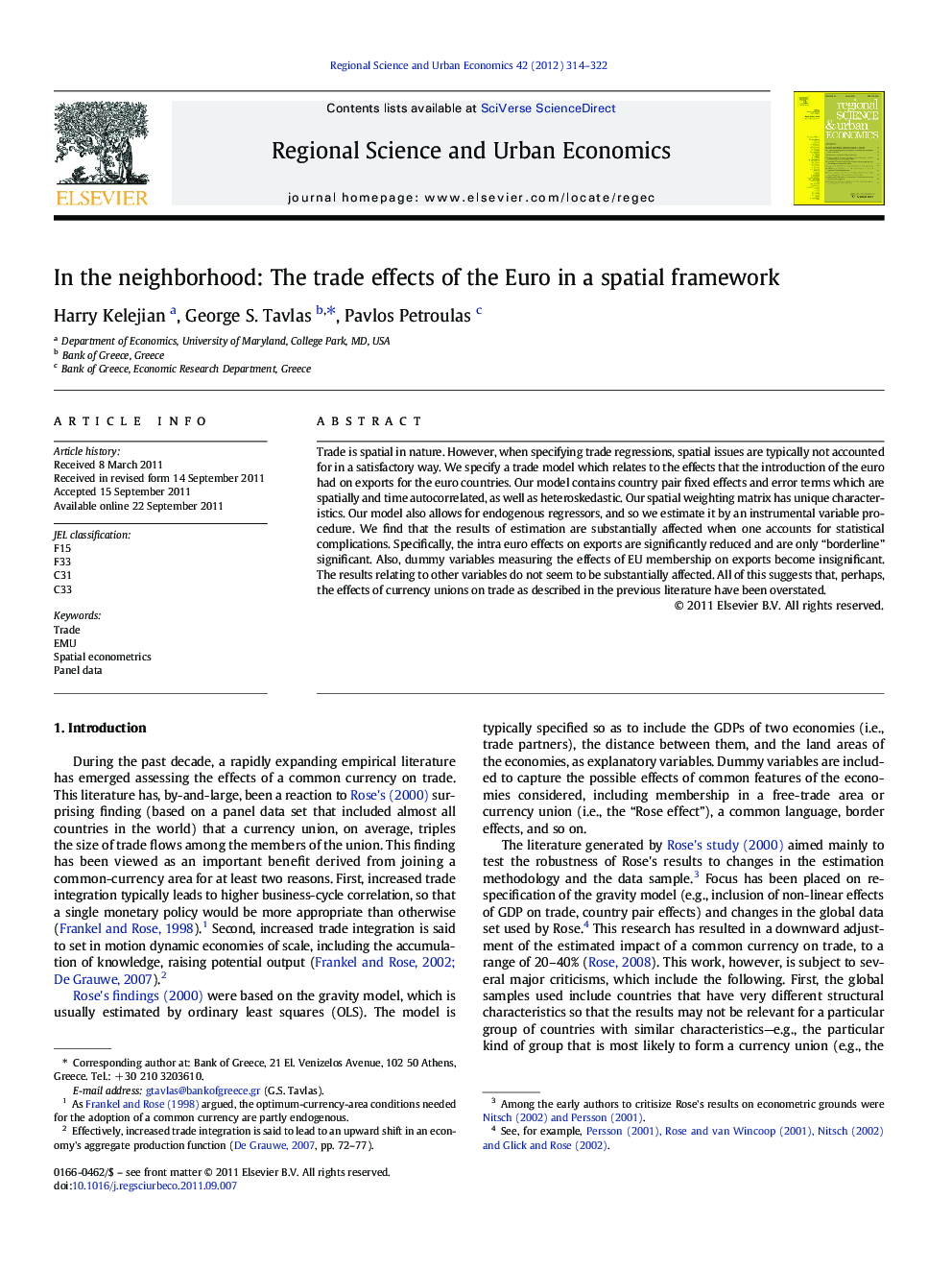| Article ID | Journal | Published Year | Pages | File Type |
|---|---|---|---|---|
| 981123 | Regional Science and Urban Economics | 2012 | 9 Pages |
Trade is spatial in nature. However, when specifying trade regressions, spatial issues are typically not accounted for in a satisfactory way. We specify a trade model which relates to the effects that the introduction of the euro had on exports for the euro countries. Our model contains country pair fixed effects and error terms which are spatially and time autocorrelated, as well as heteroskedastic. Our spatial weighting matrix has unique characteristics. Our model also allows for endogenous regressors, and so we estimate it by an instrumental variable procedure. We find that the results of estimation are substantially affected when one accounts for statistical complications. Specifically, the intra euro effects on exports are significantly reduced and are only “borderline” significant. Also, dummy variables measuring the effects of EU membership on exports become insignificant. The results relating to other variables do not seem to be substantially affected. All of this suggests that, perhaps, the effects of currency unions on trade as described in the previous literature have been overstated.
